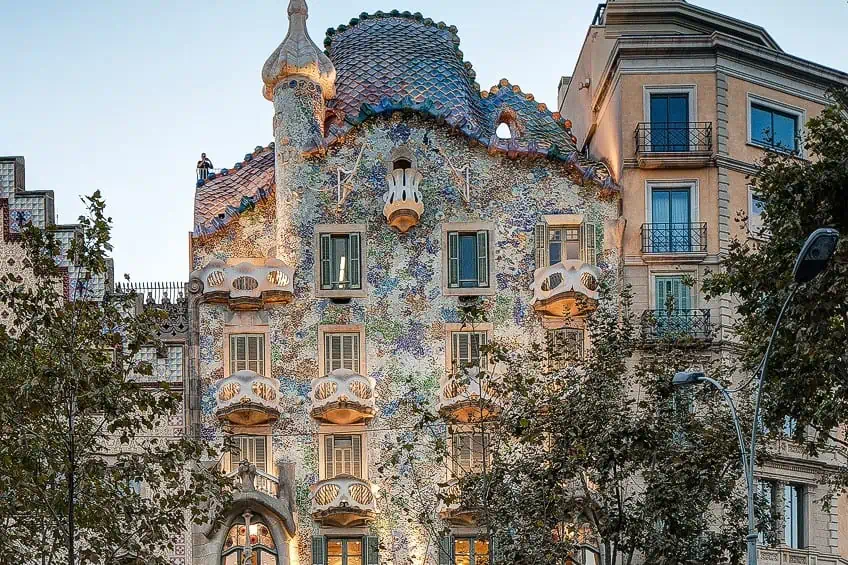Antoni Gaudí – Discover the Famous Spanish Architect
Antoni Gaudí is considered to be one of the most famous Spanish architects of all time. His work is immensely unique and stands far above practically everything else that has ever been designed. His work was personal and there have been attempts by many to emulate his style ever since his death. However, his designs are often so unique and distinct that they cannot be easily copied. This article will examine Antoni Gaudí’s biography, his architectural design, and his buildings. Keep reading to learn more about Antoni Gaudí and the absolutely gorgeous and unique structures that he managed to produce over the course of his illustrious career.
Contents
A Look at the Life of Antoni Gaudí
| Architectural Style | Catalan Modernisme |
| Years | 1852 – 1926 |
| Place of Birth | Reus or Riudoms, Spain |
| Known For | Sagrada Família, Casa Batlló, and Bellesguard |
Antoni Gaudí was one of the most influential architects of the late 19th and early 20th centuries. His work was immensely unique and unusual, and it formed a strong part of his individualized response to the way that structures should be constructed around organic lines that also paid homage to religious teachings. He was a devout Catholic alongside being a noted architect, and he was a proponent of Catalan identity.
The vast majority of this famous Spanish architect’s work can be found in Barcelona, but a few instances can be found elsewhere.
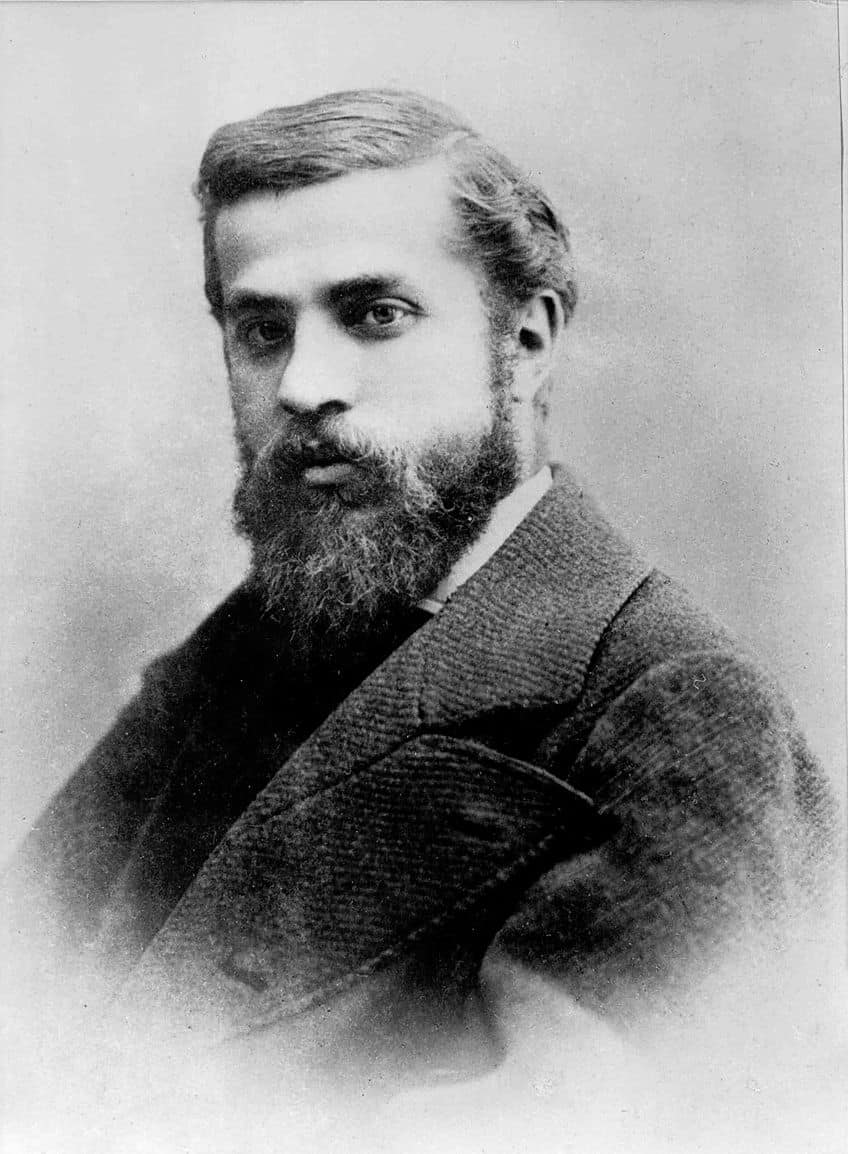
In addition to being an architect, Antoni Gaudí’s art extended far beyond the simple design of the buildings themselves. He would also work on the interior design of many of the buildings he planned, and his artistry would go on to inspire many architects for many generations after his death.
The Architectural Style of Antoni Gaudí
Antoni Gaudí’s architecture is considered to be directly connected to Catalan Modernism. This particular form of Modernism has parallels in the Art Nouveau movement. Many different nationalities had their own term for this particular architectural style. It is easiest to see it as an attempt at an organic form the likes of which had never been utilized all that much before.
Art Nouveau as a whole was focused on flowing and organic lines, the use of vegetal forms, and an attempt to emulate aspects of the natural world. Gaudí’s architecture was similar, but it was unique in its application, and having a look at Antoni Gaudí buildings is the easiest way to see that his particular style was unlike practically anything else that has ever been constructed.
Even to this day, his work is unique and idiosyncratic. It makes use of unusual forms that went far beyond every other architect operating in the same architectural arena. Antoni Gaudí’s earliest inspirations were in Neo-Gothic and Oriental forms and designs, but he quickly established himself beyond these forms (although they did form components of his later style, and there are similar influences in some of his most famous structures). His dedication to every single aspect of design, from the general structure of the building to the ornamentation, has made his particularly individualized approach something that has influenced many subsequent architects.
Once he became a proponent of Catalan Modernisme, he quickly set out to use it in practically every structure that he designed. There are a few Antoni Gaudí buildings that do not form part of what is ordinarily considered to be part of this Modernisme movement, but those buildings do not tend to be his more famous structures. This movement was, however, an attempt at creating a new kind of cultural identity for Catalan. It was more than only architecture, but unlike many, Antoni Gaudí exemplified multiple aspects of this form rather than only a single part of it.
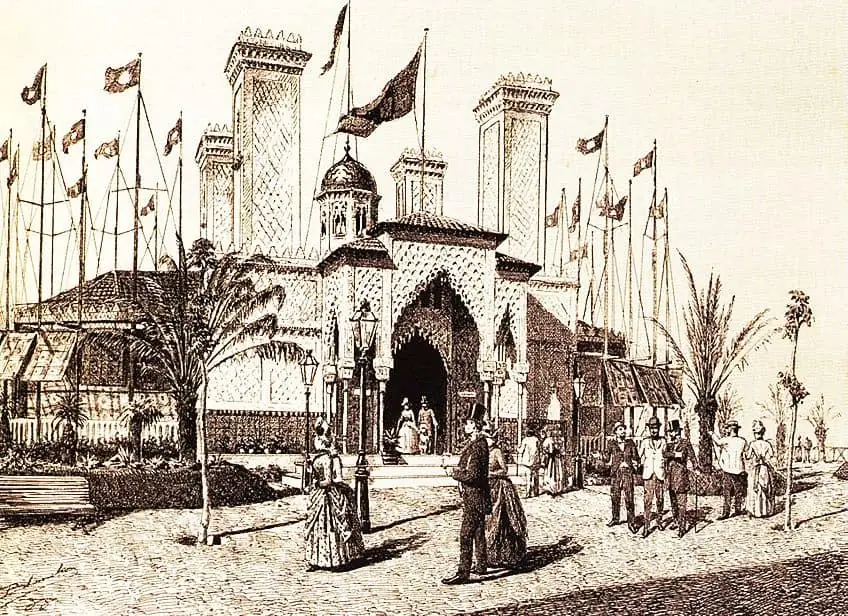
Antoni Gaudí’s paintings, interior designs, metalworking, and other artistic forms would be incorporated into many of the buildings that he designed. For this reason, he is considered to be the greatest proponent of Catalan Modernisme. His works transcend everything else produced by others who followed similar lines, and he is noted for many of the aspects of design that he would revolutionize.
He made use of more naturalistic and flowing designs, such as geometrical forms, flowing curves, unusual colors, and naturalistic but odd-looking external features, many of which are easiest to discuss in more specific terms as will be done in the last section of this article. His work on both the interior and exterior design of his structures, often designing interior aspects like the furniture itself, would go on to become some of the major aspects of his work.
When he was still a student, Antoni Gaudí spent much of his time learning far more than was expected of him. He attended many craft workshops to attempt to improve on the many different design elements that could be incorporated into architecture if only most other architects would make use of them, such as sculptures, metalworking, stained glass, carpentry, and ceramics. Antoni Gaudí combined them all into a unity of vision.
His attention to detail and his dedication to the smallest details in everything he designed, turned Antoni Gaudí into one of the most recognizable architects in Spain and later, the world. His work has been studied extensively for generations, and there are many architects who have been inspired by the works that he produced. Antoni Gaudí’s architecture and buildings have been influences on Modern and Postmodern design for years, and his work continues to be copied and emulated to this day.
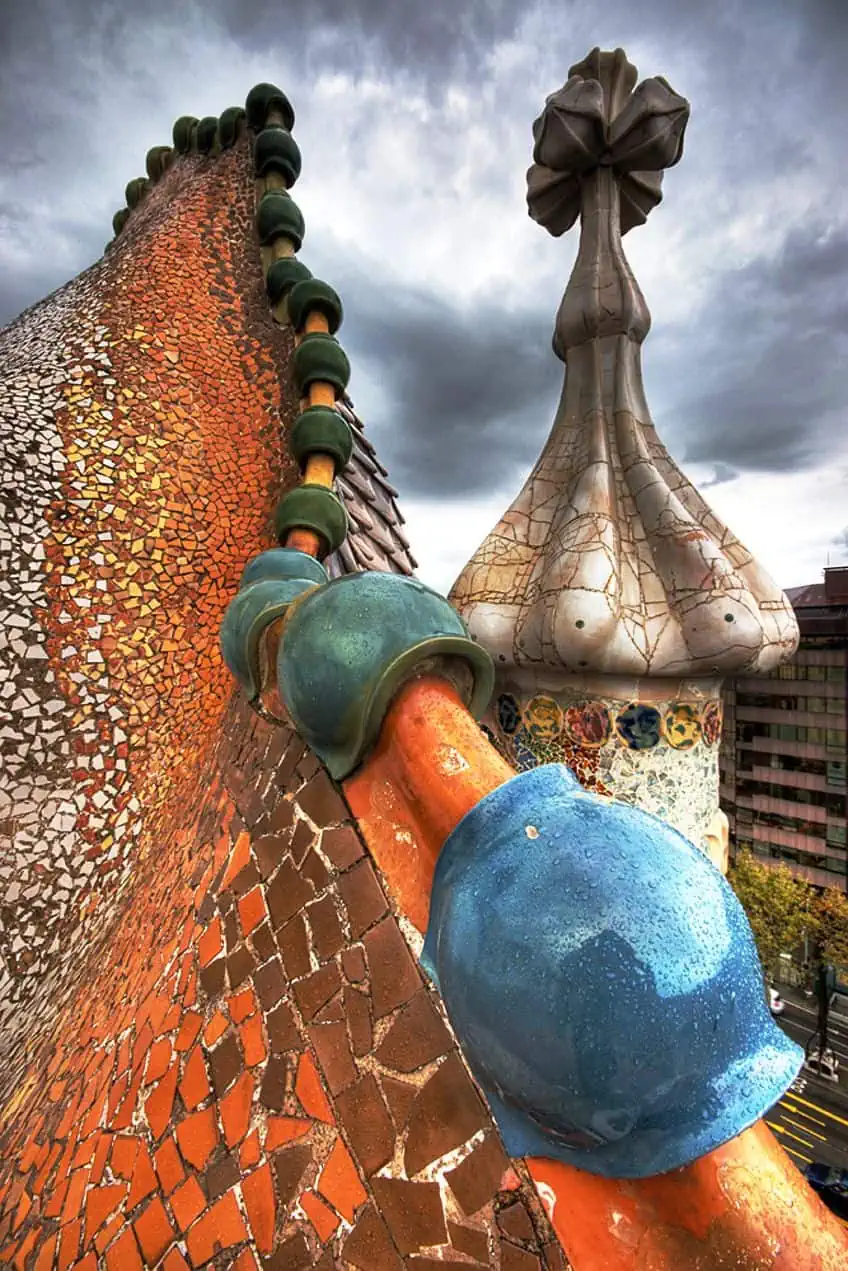
Aside from his basic architectural and design capabilities, this Spanish architect attempted to inject various aspects of himself into his work. He was a deeply religious man and a lover of the natural world, which was a further extension of his religious beliefs, and so the buildings that he designed were often an attempt to incorporate those other loves of his life into the work that he produced. This may also be why his work is particularly difficult to truly emulate.
Antoni Gaudí’s biography and beliefs were highly personal, and so his architectural and artistic style was also highly personal. He was a unique individual who cannot easily be copied, and the forms that he designed over the course of his career will continue to be some of the most unique and original architectural designs ever created.
Not to mention his immense dedication to his work, such as his lifelong dedication to the building for which he is, definitely, best known: the Sagrada Família. A structure such as this, which was meant to be a rather simple church, became such an aspect of Gaudí’s artistic adoration that it is still being completed to this very day by the people who consider themselves to be lovers and continuers of Gaudí’s legacy.
Antoni Gaudí’s Biography
Antoni Gaudí was born in either Reus or Riudoms (but that is not entirely known) in Catalonia in 1852, and he displayed a talent for illustration when he was very young. He started his tertiary education as a teacher, but during that period, he would also attend workshops to learn far more about design. After his schooling, he completed his mandatory military service (but spent much of it too sickly to join), and he would eventually leave and start his design career. In the beginning, he started with a lamppost commission. He then started to be recognized for his designs, and he was handed larger and larger commissions.
Eventually, he caught the attention of Eusebi Güell, who became one of his most significant patrons. He would continue to design buildings during this period, and then everything changed when he was handed a project in Barcelona to design what would become the Sagrada Família.
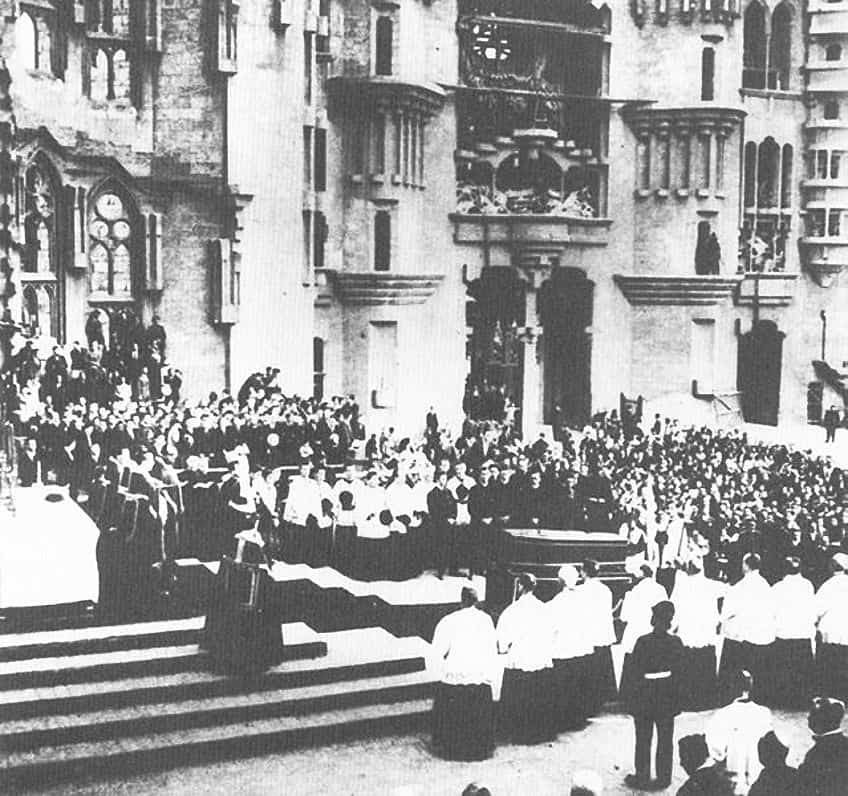
He spent the rest of his life working on that church. At the turn of the century, he had become a well-established architect and had numerous assistants and projects at any one time. He designed some of his most famous structures during this period. Once it reached the 1910s, his fortunes had changed as he experienced extensive personal tragedy, and from 1915 onwards, he dedicated himself entirely to the Sagrada Família. He spent the rest of his life working on this famed church and then, on 7 June 1926, he was going for one of his usual daily walks when he collapsed. His general appearance, despite being a famous architect, was humble. This meant that he was mistaken for a beggar, and he didn’t receive help as quickly as he should have received it. He died a few days later.
A Few Antoni Gaudí Buildings
Antoni Gaudí’s buildings reflect more than just his architectural flair, as has been discussed. Instead, Antoni Gaudí’s artistry, dedication to naturalistic forms, and his immense devotion to his religious faith have made his designs some of the most personalized ever constructed. There is nothing else quite like an Antoni Gaudí building, and that will be shown in the five buildings below. Keep reading to learn about a few of Antoni Gaudí’s buildings to see what makes them so utterly unique.
Sagrada Família (1883 – Present) in Eixample
| Date Constructed | 1883 – Present |
| Function | Church |
| Location | Eixample, Barcelona |
The Sagrada Família is, by far, the most famous building that Antoni Gaudí ever designed. The building was not even his, to begin with, and instead started life as an unfinished Catholic church that was then handed off to Gaudí. Once he was in charge of the design, he quickly altered the plans and turned it into the greatest personal project of his life. The building would be designed around multiple spires, have a façade reminiscent of numerous architectural styles, and it would be truly monumental in size.
He never finished the building. By the time of his death, only about a quarter of the building was finished.

It has been continually constructed, with long periods of quiet, in the near century since his death. The Sagrada Família is still not complete today, but its blend of various styles has been upheld despite him no longer serving as the living architect of the building. His wishes have simply been respected for decades upon decades.
Palau Güell (1885 – 1890) in Carrer Nou de la Rambla
| Date Constructed | 1885 – 1890 |
| Function | Mansion |
| Location | Carrer Nou de la Rambla, Barcelona |
Palau Güell is one of the buildings that Antoni Gaudí designed for Eusebi Güell, his patron, and his building is also a relatively ordinary building when compared to some of the other structures that would become so well known for their unique presentation.
This particular structure was a mansion that was meant to entertain the many high-profile guests that his patron would often invite to his lavish parties.
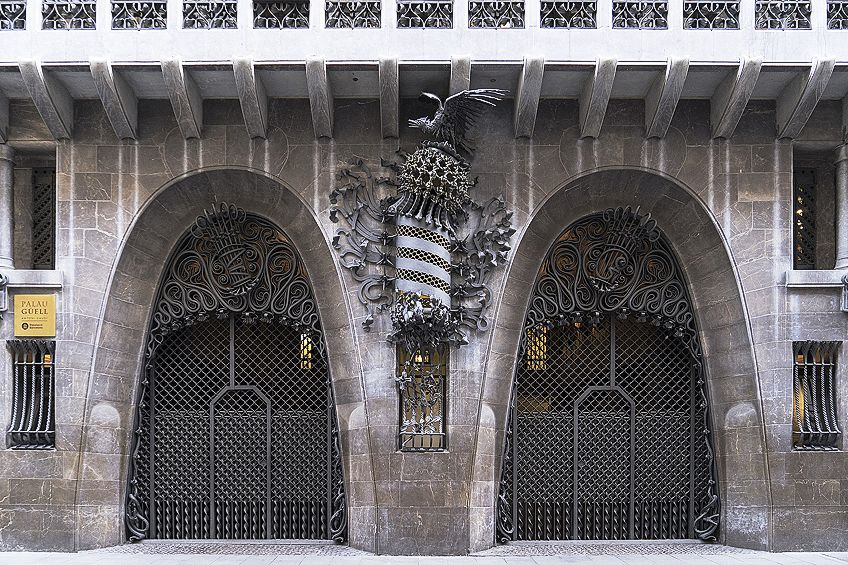
This particular mansion is known for its event-oriented interior design. The main hall contains a high roof that is adorned with various lanterns that are designed to make the ceiling look like the night-time sky. This naturalistic presentation of the roof only goes to show that even when restrained by the needs of a patron who only needed a building to be designed to entertain rich guests, Antoni Gaudí could still bring his own flair and naturalistic theatricality to the whole affair.
Bellesguard (1900 – 1909) in Sarrià-Sant Gervasi
| Date Constructed | 1900 – 1909 |
| Function | Manor house |
| Location | Sarrià-Sant Gervasi, Barcelona |
Bellesguard is a manor house that was designed to look like a castle. The reason for this, which is somewhat unusual among Antoni Gaudí’s otherwise unique structures, is because the building was constructed atop a location that had once housed the castle of a king. This is why Gaudí produced a more restrained style that emulated the Gothic castle that would have once stood on that spot.
This was an attempt to, in some ways, recreate the medieval castle that had once been perched on that elevated piece of land.

The elevation of the land is important for the building too as the name of the building actually means “Beautiful View.” The reason for this name has nothing to do with the appearance of the building itself, although it is a rather gorgeous structure, but rather because the top of the castle-like building gives an utterly stunning and picturesque view of the city that sprawls down below it for miles in every direction.
Casa Batlló (1904 – 1906) in Passeig de Gràcia
| Date Constructed | 1904 – 1906 |
| Function | Hosting destination |
| Location | Passeig de Gràcia, Barcelona |
The Casa Batlló is considered to be one of the most famous Antoni Gaudí buildings. This particular structure is an utterly unique expression of the kind of designs that Gaudí wanted to produce. The building is considered to be a masterpiece of his design, and it’s particularly interesting that this is the case because the building is not actually entirely his design. Instead, there was an existing building in this location, but Antoni Gaudí redesigned it to such an extent that the original design is no longer considered when discussing this site.
The building makes use of an unusual skeletal design. The façade looks like an organic creature of some kind that rises out of the earth. It entails a strange form that extends upwards to the very top of the building, and thanks to this skeletal design, the building has come to be known as the “House of Bones.”
This bonelike design turns this building into something the likes of which have never been seen before or since. His designs and interior work were unusual but have turned them into some of the most distinctive buildings in all of Barcelona. Even amongst other Antoni Gaudí buildings, this House of Bones is unique. The irregular skeletal designs move upwards along an uneven general construction to produce a somewhat rough exterior comprised of stonework.

In addition to this general construction of the façade, the oval windows that cover the structure give the entire building a unique aesthetic that is continued on the roof. There is a reptilian design that is meant to evoke natural imagery on that roof, and it sits alongside an onion-shaped dome. This is only the exterior of the building though. What about the interior? The inside of this House of Bones is made of a similar stonework to the exterior, but mosaic tracery covers the interior and only further adds to the general peculiarity of the design as a whole. All of these elements together have made Casa Batlló one of the most distinctive structures that Antoni Gaudí ever designed.
Casa Milà (1906 – 1912) in Passeig de Gràcia
| Date Constructed | 1906 – 1912 |
| Function | Residence |
| Location | Passeig de Gràcia, Barcelona |
The Casa Milà is a Antoni Gaudí building that did not receive all that much love when it was first constructed as many took to calling it “the quarry” because of its rough exterior design. The façade of the building is designed to be a flowing structure that makes use of curved corners and edges so that there are no truly pointed elements. This made the building very distinct from practically everything else that had been designed at the time. In fact, this particular building can even be seen as something of a precursor to contemporary designs like Blobitecture.
This particular Barcelona building includes various elements needed for a residential structure. It includes things like a rooftop terrace that allows the residents to have their own space away from the hubbub of the city below. This was unique and distinct for the time period.
The interior is similarly unique with a free plan general design, and there’s even an underground garage. This last element was particularly unique for the time period. This means that while the building is rather odd in its general construction, it’s also far more functional than may be expected from a building with a design along these lines. Like many of the buildings that Antoni Gaudí designed, this structure was meant to have a far greater application of religious imagery embedded into the design itself, but he did not ultimately do so. He almost entirely abandoned the project because of this, but he ultimately decided to stay on to complete it.
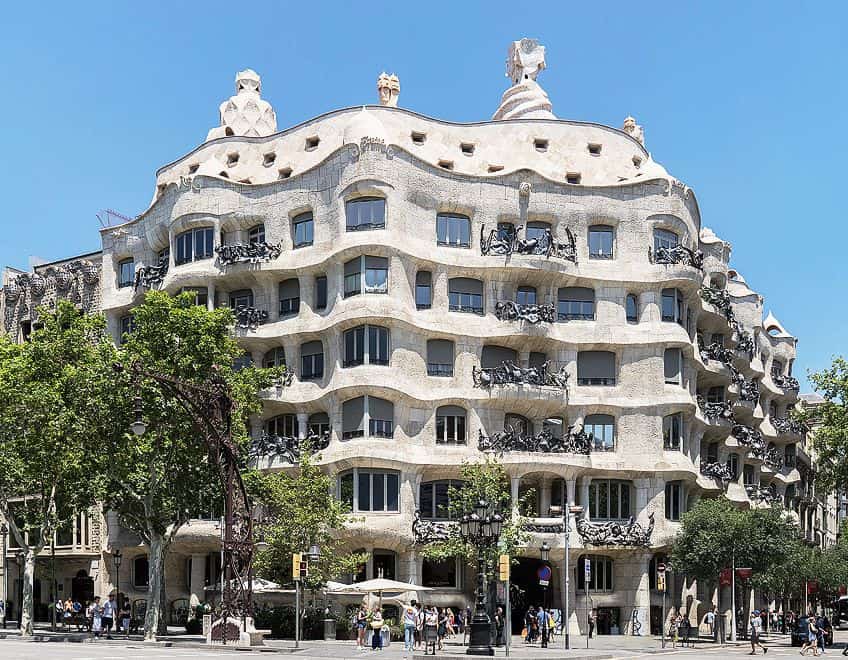
The reason he went against his usual religious dedication was because there was a wave of anti-religious sentiment in the city during this period, and he did not wish for the building to be unduly damaged because of it. Once the building was done, it was insulted and attacked for its design, but it has since become one of the most famous buildings ever designed by Antoni Gaudí. It may have been criticized at the time, but as the years have rolled by, it has become one of the most beloved buildings in the city, and the originally insulting nickname that the building attained has since become a term of endearment.
We have come to the end of our discussion about Antoni Gaudí. We have examined Antoni Gaudí’s biography, his architectural designs, and a few of the many buildings that he designed. He is particularly well known for certain structures above others, like the Sagrada Família, but many of his designs were utterly unique expressions of his personal ideology. Antoni Gaudí has inspired many in the generations after his death, and hopefully, we have given him the attention that he deserves today. Perhaps, try to be like Antoni Gaudí and attempt to learn far more than you are expected to learn. You never know what you might accomplish!
Frequently Asked Questions
Who Was Antoni Gaudí?
Antoni Gaudí was a Catalan architect who was considered to be the greatest master of an architectural movement known as Catalan Modernisme. He was born in Catalonia, Spain, and was a proponent of Catalan cultural identity. His work has gone on to influence many subsequent architects and designers, as his work is so unique in its general application and overall design.
What Was Antoni Gaudí’s Architectural Style?
Antoni Gaudí may have been a proponent of Catalan Modernisme, but this is not the easiest way to classify his work. His work is, in many ways, beyond ordinary classification. His work is distinctive and unique, arising from his devotion to his faith, his love of naturalistic forms, and his general adoration for design in many forms. He made use of various techniques throughout his career to create an idiosyncratic style the likes of which has never been seen before or since. For this reason, Antoni Gaudí is often considered to be a visionary.
What Was Antoni Gaudí’s Greatest Architectural Influence?
While Antoni Gaudí started his architectural career by being influenced by Oriental and Neo-Gothic forms, and he did still incorporate aspects of these forms into his design, he is best known for being influenced by the natural world. He adored shapes and colors that could be drawn from nature, and his use of strange geometry gives his work the kind of organic design that can be seen as a precursor to styles such as Blobitecture. However, unlike buildings that were designed in similar ways using a computer, Antoni Gaudí designed his visionary constructions through models and physical design.
What Is Antoni Gaudí’s Most Famous Building?
Antoni Gaudí’s most famous building is never much up for debate, as it is widely considered to be the Sagrada Família. The reason that this building is considered to be his greatest architectural achievement is because he spent the majority of his life working on it, turning it into a church the likes of which have never been seen anywhere else on the planet, and he never even got the change to finish it in his lifetime. The building is still incomplete nearly a century after his death. The building is truly colossal in scale, and is still being constructed to this day as a monument to the great work that Antoni Gaudí produced and the dedication he put into it.
What Is Antoni Gaudí Known for Other Architecture?
Antoni Gaudí may be best known as an architect, but he learned many other trades before he started, and he incorporated many of these into his designs. Antoni Gaudí’s paintings, mosaics, furniture, and other artistic elements can be seen in many of the buildings that he designed, as he would incorporate them into the designs of his structures. His architecture was his primary art, but he injected everything else he loved into his designs to produce something that can only be seen as a reflection of Antoni Gaudí and no one else.
Justin van Huyssteen is a writer, academic, and educator from Cape Town, South Africa. He holds a master’s degree in Theory of Literature. His primary focus in this field is the analysis of artistic objects through a number of theoretical lenses. His predominant theoretical areas of interest include narratology and critical theory in general, with a particular focus on animal studies. Other than academia, he is a novelist, game reviewer, and freelance writer. Justin’s preferred architectural movements include the more modern and postmodern types of architecture, such as Bauhaus, Art Nouveau, Art Deco, Brutalist, and Futurist varieties like sustainable architecture. Justin is working for artfilemagazine as an author and content writer since 2022. He is responsible for all blog posts about architecture.
Learn more about Justin van Huyssteen and about us.
Cite this Article
Justin, van Huyssteen, “Antoni Gaudí – Discover the Famous Spanish Architect.” artfilemagazine – Your Online Art Source. June 13, 2023. URL: https://artfilemagazine.com/antoni-gaudi/
van Huyssteen, J. (2023, 13 June). Antoni Gaudí – Discover the Famous Spanish Architect. artfilemagazine – Your Online Art Source. https://artfilemagazine.com/antoni-gaudi/
van Huyssteen, Justin. “Antoni Gaudí – Discover the Famous Spanish Architect.” artfilemagazine – Your Online Art Source, June 13, 2023. https://artfilemagazine.com/antoni-gaudi/.


